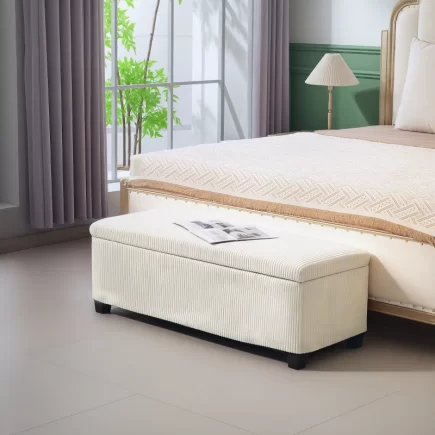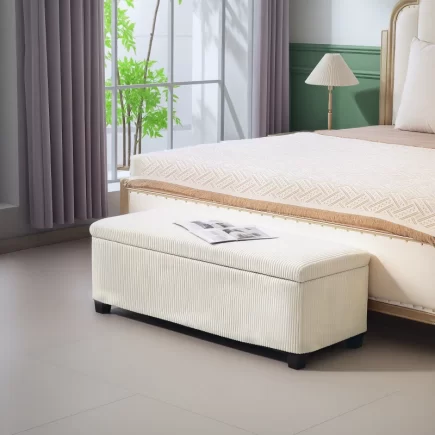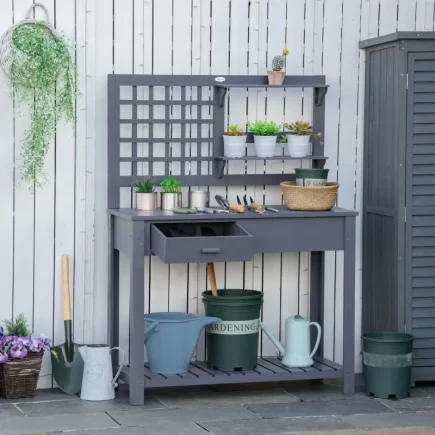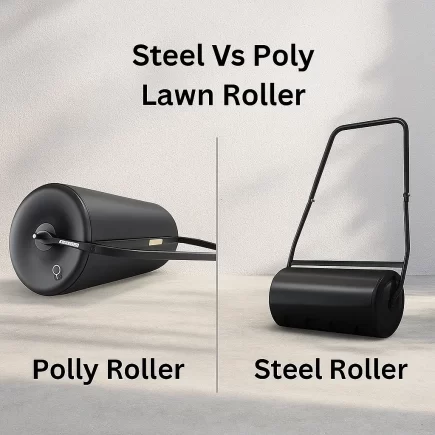Carports offer protection for vehicles, tools, and outdoor equipment, but they can also become magnets for pests such as flies, mosquitoes, ants, and rodents. Not only are these insects annoying, but they can also damage your belongings and make your carport an uncomfortable space to use. Fortunately, several ways exist to keep insects out of your carport and maintain a clean, pest-free environment.

In this guide, we’ll walk you through practical DIY solutions to prevent pests from invading your space.
Methods to Keep Insects Out
DIY Insect Repellents
In addition to sealing entry points and maintaining cleanliness, using repellents is an effective way to deter insects from entering your carport.

Essential Oil Insect Repellent
Essential oils like citronella, peppermint, and eucalyptus are natural insect repellents. Here’s how to make your spray:
Ingredients
- 10-15 drops of citronella or peppermint essential oil
- 1 cup of water
- A small spray bottle
Step-by-Step Instructions
- Add Essential Oil: Fill a spray bottle with 1 cup of water and add 10-15 drops of essential oil.
- Shake Well: Shake the bottle to mix the oil and water.
- Spray Around the Carport: Spray the mixture around entry points, windows, and vents to keep flying insects away.
This simple and natural spray is effective at repelling mosquitoes and flies without harsh chemicals.
Seal Entry Points
One of the most effective ways to keep insects out of your carport is by sealing entry points. Even the smallest cracks or gaps can allow pests to slip inside. Here’s how you can tackle the problem:
Sealing Gaps Around Doors and Windows
Sealing gaps around doors and windows is a simple yet effective way to keep insects out of your carport. Here’s how:

Tools Needed
- Weatherstripping
- Scissors or a utility knife
- Measuring tape
- Adhesive backing (if not pre-installed)
Step-by-Step Instructions
- Measure the Gaps: Start by measuring the gaps around your doors and windows. Open and close them to check for any areas where light or air is coming through.
- Cut the Weatherstripping: Cut the weatherstripping to match the length of the gap.
- Apply the Weatherstripping: Peel off the backing and press the weatherstripping firmly along the door frame. Repeat the process for windows and any other doors.
- Test the Seal: Close the door or window and check for any remaining gaps. If needed, adjust or add more weatherstripping.
Weatherstripping is an affordable solution that helps seal doors and windows while also improving energy efficiency by reducing drafts.
Sealing Cracks with Silicone Caulk
For larger cracks or gaps in the walls, foundation, or roof of your carport, silicone caulk is a durable solution. Here’s how to use it:
Tools Needed
- Silicone caulk
- Caulking gun
- Utility knife or razor blade
- Cleaning cloth
Step-by-Step Instructions
- Clean the Area: Clean the crack with a damp cloth to remove dust or debris before applying the caulk.
- Prepare the Caulk Gun: Insert the caulk tube into the gun and cut the tip at a 45-degree angle to control the flow of the caulk.
- Apply the Caulk: Squeeze the caulking gun gently and apply a steady bead of caulk along the crack.
- Smooth the Caulk: Use a wet finger or smoothing tool to smooth out the caulk and ensure it adheres well to the crack.
Clean Up: Wipe away excess caulk with a damp cloth before it dries.
Silicone caulk is weather-resistant and durable, making it an excellent choice for outdoor use. It creates a strong seal that prevents insects from squeezing through cracks.
Installing Mesh Screens for Vents
If your carport has vents or other openings, mesh screens are an easy way to keep flying insects like mosquitoes and flies from entering while still allowing air to flow.

Tools Needed
- Mesh screen material
- Scissors
- Staple gun or adhesive strips
Step-by-Step Instructions
- Measure the Openings: Measure the size of the vents or gaps where you want to install screens.
- Cut the Mesh Screen: Cut the mesh material to match the size of the opening.
- Attach the Screen: Secure the screen using a staple gun or adhesive strips, ensuring it’s taut and properly fitted.
- Check for Gaps: After installation, check for any gaps where insects might sneak through.
Mesh screens are a simple and cost-effective solution for preventing flying insects from entering your carport.
Keep Your Carport Clean and Dry
A clean and dry carport is less inviting to pests. Regular cleaning and eliminating moisture will make your carport much less attractive to insects and rodents.

Tools Needed
- Broom
- Dustpan
- Mop and bucket
- Cleaning solution (mild soap or all-purpose cleaner)
Step-by-Step Instructions
- Sweep the Floor: Start by sweeping up dust, dirt, and debris, especially in corners and areas where storage items are placed.
- Mop the Floor: Mop the floor after sweeping to remove lingering dirt or stains.
- Wipe Down Surfaces: Clean shelves, counters, and other surfaces to remove food particles or spills that could attract pests.
- Organize Storage: Keep tools, boxes, and equipment off the floor to reduce clutter, which can provide hiding places for pests.
Regular cleaning ensures that food and debris don’t accumulate, making your carport less attractive to pests.
Eliminating Standing Water
Standing water is a breeding ground for mosquitoes and can attract other pests. Here’s how to eliminate it:
Step-by-Step Instructions
- Check for Water: After rain, check for standing water in flowerpots, tires, containers, or any other spots where water could accumulate.
- Empty Containers: Turn over containers that could trap water, or empty those that have collected water.
- Fix Leaks: Repair any leaky pipes, gutters, or fixtures to prevent water from accumulating in the first place.
Eliminating standing water will help prevent mosquito breeding and reduce the number of pests in your carport.
Preventing Rodents and Larger Pests
Rodents such as mice and rats are often drawn to carports for shelter. Here are a few strategies to keep them out:

Rodent Traps
Tools Needed
- Snap traps or live traps
- Peanut butter or seeds (for bait)
Step-by-Step Instructions
- Place Traps: Set traps along walls or in areas where you have seen signs of rodent activity.
- Bait the Traps: Use a small amount of peanut butter or seeds to lure rodents into the trap.
- Check Traps Regularly: Monitor the traps and remove any caught rodents promptly.
Rodent traps are an effective way to control rodent populations in your carport.
Proper Garbage Management
Garbage is one of the biggest attractants for pests. Properly managing your waste can help reduce infestations.

Step-by-Step Instructions
- Use Sealed Containers: Invest in outdoor garbage cans with tight-fitting lids to prevent pests from accessing food scraps.
- Store Garbage Away from the Carport: If possible, keep garbage cans a short distance away from the carport to reduce the chance of pests finding food.
Empty Trash Regularly: Dispose of trash promptly, especially food scraps and pet waste. - Clean Garbage Area: Clean around the garbage bins to remove any residue that might attract pests.
Proper garbage management reduces one of the main attractants for pests.
Seasonal Pest Control
Pests vary depending on the season, so adjust your pest control methods accordingly.
Winter Pest Control
During colder months, rodents are more likely to seek shelter inside your carport. To prevent this:
- Seal any cracks or gaps around doors and windows.
- Store food properly and avoid creating clutter that could become rodent nests.
Summer Pest Control
In warmer months, mosquitoes and flies are more active. To manage these pests:
- Use mosquito dunks in standing water to kill larvae.
- Set up UV light traps to attract and trap flying insects.
By being proactive and adjusting your pest control strategies based on the season, you can keep your carport pest-free year-round.
Enjoy A Pest-Free Carport
To keep insects and rodents out of your carport, focus on sealing entry points, maintaining cleanliness, eliminating moisture, and using natural repellents. Regular cleaning, proper waste management, and the use of traps will also help control pests. By combining these methods, you’ll create a comfortable, pest-free environment for your vehicles and outdoor storage needs.
FAQS
1. How can I prevent pests when storing firewood in my carport?
Store firewood off the ground and away from the carport walls to reduce pest attraction. Cover the wood with a tarp to protect it from moisture and pests.
2. How can I keep ants out of stored tools in my carport?
Store tools in sealed containers or on shelves to prevent ants from nesting. Regularly inspect for any signs of ant activity and treat with ant baits or sprays.
3. Why do flies gather in my carport, even with doors closed?
Flies are attracted to food and moisture. Ensure there are no food scraps, pet food, or standing water nearby, and use fly traps or natural repellents around the area.
4. How do I manage a pest problem in my carport without using chemicals?
Use natural repellents like essential oils, keep the area clean, seal gaps, and set up traps. These methods can be just as effective without resorting to harsh chemicals.

























